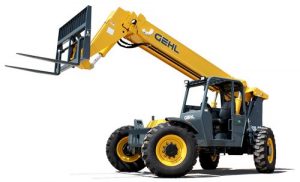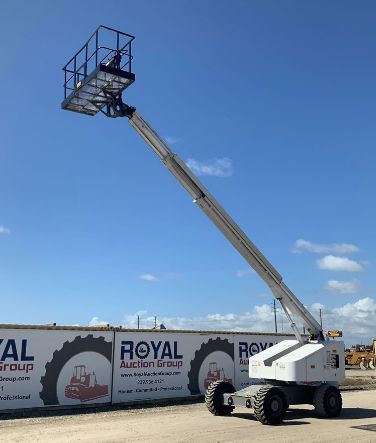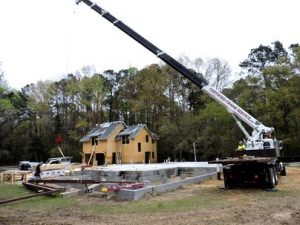22 Feb January 2022: Equipment for Building


Office: 843 846 2500
www.WillisSinclair.com
Info@WillisSinclair.com
Excellent Quality. Exceptional Service.
January 2022
Number 95
We at Willis Sinclair
hope you have a
Happy and Prosperous 2022!
hope you have a
Happy and Prosperous 2022!

Liz, our daughter-in-law and Samuel, our youngest grandchild. We visited them in November and had a picnic on the land they just closed on in late December.
From the Desk of Bill 
As I am sure you have heard dozens of times, it is difficult to believe it is a new year already. Hopefully, in 2022, we will begin to return to normal in our country.
Kandy and I are planning a trip west in June with more grandchildren, The trip we had planned in 2020 we postponed to 2021 and then again to 2022. Hopefully, we won’t have to postpone it again. It takes a good bit of effort to layout a trip, decide what to see and make reservations especially in some of the large National Parks (Yellowstone, Grand Canyon, Mesa Verde and such) because they often book up a year in advance. We have reservations in those parks and if things don’t get crazy, we will take four more grandchildren (two at a time) for a tour of our beautiful western states.
When I was doing electronic design work in a previous life, I liked to follow my designs into production by supporting the factory technicians. Some engineers preferred to send their designs to production and then disappear. For me, following the designs (and living with my mistakes) was a good way to gauge the quality of my designs so I could correct weaknesses on the next interaction. In the factory, I often spent my time coaching the techs on basic troubleshooting skills. Those skills are not often automatically acquired.
Fortunately for me, my Daddy spent a lot of time with me teaching me how to work on trucks, tractors, cars, appliances and basically anything else. I learned fractions when I was about 6 or 8 years old because when my Daddy wanted a 9/16 inch wrench, I learned it was slightly bigger than a ½ inch wrench. When I was “introduced” to fractions in school, it was a piece of cake for me.
Troubleshooting was another skill I learned as a boy. I actually had no idea I was “troubleshooting” and thought I was just fixing something. Basically troubleshooting involves being alert to problems and determining the cause and then fixing it. When a vehicle makes an unusual sound, that is a clue for a troubleshooter. Why would it be making that sound? Is the sound related to the engine speed or perhaps the ground speed? If you put the vehicle in neutral (N) and let the engine slow down, does the sound change? If not, the sound is probably related to the vehicle speed (since the vehicle does not slow down quickly as the engine does in neutral). By using logic and working to isolate the cause of the problem, one can zero in on the exact area to be addressed.
The alternative, which I used to have to challenge in the factory setting, was what was called “shotgunning.” When a tech started “shotgunning”, he would just start changing parts until the circuit behaved properly. (Sometimes this was affectionately called the “guess and miss” method of repair work.) Eventually, “shotgunning” worked, but it was seldom quick or efficient. Many good parts were replaced. The tech would never know for sure he had corrected the problem since he did not really know the source of the problem.
When I designed airborne radar receivers we normally used five or six amplifiers in a row to amplify the reflected signal. (A radar system sends out a burst of radio frequency energy and then listens for the reflection or echo. The reflected signal is very small (typically a few microvolts) and has to be amplified considerably where it can be processed.) Since the reflected system could vary a lot in magnitude (depending upon the distance and size of the object reflecting the signal), we had to control the amplifier’s amplification (turn the gain up or down). Obviously, that had to be done automatically with an AGC (Automatic Gain Control) circuit.
If we had a radar receiver that had a low output, often the tech would change the AGC circuitry thinking that was the problem. Usually, the problem was that one of the string of amplifiers was not working and the AGC circuit was not able to adjust the gain (amplification) properly. I would have them check before and after each amplifier to see that each was indeed increasing the signal. If they found an amplifier that was not amplifying, then they found the “smoking gun” and could replace it to correct the problem.
The steps in troubleshooting are simple, just locate the problem (or potential problem) and then correct it. Making changes or replacing parts is not a good way to work. Those same troubleshooting techniques I learned long ago have served me well over the years.
I remember working on a washing machine not too long ago. The machine would not empty the water. I checked the circuit that turned the pump on and it seemed to be working. I measured the pump windings and they seemed ok (i.e., they were not burned out), so that indicated that the pump may have been mechanically bound (maybe seized bearings or something binding the impellor). We took the pump apart and sure enough, a screw (probably from a boy’s pocket) had managed to work its way through a screen designed to keep debris out of the pump impeller and bound the pump. We removed the screw and everything worked like it should. Of course, we could have replaced the pump control circuitry and the pump for several hundred dollars and a week or so wait for the parts. We might have even decided to simply replace the washer. However by troubleshooting (locating the problem), we were able to fix it for zero dollars and a couple of hours work.
Troubleshooting skills can be useful in many places including home building. A good builder can look at plans or problems and sometimes see problem areas that have escaped others. Be sure you select a builder who can troubleshoot accurately. You don’t want “shotgunners” working on your projects.
Those same skills are needed for tasks such as repairing a crack in a wall. Of course, you can just patch the crack and hope for the best or you can troubleshoot: figure out why the wall cracked. Once you know why, you can fix that and then patch the crack with confidence it won’t open again. The “shotgun” approach would be patch the crack on a regular basis. You don’t want a builder who “shotguns.”
Equipment for Building
Building a home or doing major remodels is a big project. Years ago, a carpenter needed a hammer and saw along with a carpenters folding rule and a square and that’s about all. Today, there are many tools available to speed the building process. Although you probably won’t need any of them, it is good to have a basic understanding of them and their functions. Most people are familiar with pneumatic tools (nail guns, for example). Those are common on a job site and greatly speed the building process. Power saws and drills are also common, familiar tools carpenters use.
In the past, nails were purchased in 50 pound boxes and typically a framing carpenter was expected to use all 50 pounds in a good day’s work. It took a couple of blows to sink a nail. Today, with a pneumatic nail gun, all it takes is a trigger pull. The nail gun can embed nails without disturbing the boards being nailed. Using a hammer jars the boards and can cause misalignments if the carpenter is not careful. Nail guns are handy when doing trim work, because they don’t leave “elephant footprints” (a large round dent made by a hammer strike that was not accurately aimed).
Today, you often see laser levels and transits (used for determining level). Some countertop people even use laser measuring equipment to measure exactly what shape a counter top should be. Did you ever wonder how electricians accurately position ceiling lights? Often, they will lay out the light’s position on the floor where it is easy to measure and then put a laser level that shoots straight up on the marked spot. The laser beam then shows them exactly where the light needs to be on the ceiling.
There are many other pieces of equipment that make the building process much easier. Builders might use circular (“Skil”) saws, reciprocating (“Sawzall”) or oscillating (“Fein”) saws. You sometimes see them on job sites.

Forklift
Often on job sites, you will see a fork lift. A construction forklift does not look like one that might be used in a factory setting (where it is driven on concrete). The construction fork lift has large tires like a tractor.
Like the man lift, the boom will extend and can be raised or lowered. It is a very useful piece of equipment for moving heavy materials.
Often on job sites, you will see a fork lift. A construction forklift does not look like one that might be used in a factory setting (where it is driven on concrete). The construction fork lift has large tires like a tractor.
Like the man lift, the boom will extend and can be raised or lowered. It is a very useful piece of equipment for moving heavy materials.

Man Lift
A man lift is a device with a basket (for a worker or two) at the end of a boom that can be raised and turned as needed. This allows a worker to access areas on a home that would otherwise require a ladder.
A man lift is a device with a basket (for a worker or two) at the end of a boom that can be raised and turned as needed. This allows a worker to access areas on a home that would otherwise require a ladder.

Crane or Boom Truck
Sometimes materials that are heavy have to be positioned in areas where a fork lift cannot reach. In those cases a crane may be required. This crane helped place some heavy steel I beams (lower left corner) used in the structure.
Sometimes materials that are heavy have to be positioned in areas where a fork lift cannot reach. In those cases a crane may be required. This crane helped place some heavy steel I beams (lower left corner) used in the structure.
A Boom Truck is a truck with a boom on it — hence the name. They are basically small cranes. Their lifting capacity and reach is not nearly as great as a crane, but often they can be sufficient.
Although this large equipment is very useful, few residential contractors own any. Equipment that is being used is a good investment. Equipment that is not being used is bad and expensive to let sit around. Generally equipment is owned by sub contractors who basically do the same task (framing, for example) at a number of jobs.
Some equipment is used so seldom, it is far better to just rent it. The crane in the photo above was used to place some steel beams. It cost about $400 to have the crane company come out for two or three hours and do the work. Generally renting a large piece of equipment is over $1,000 per week without an operator. Paying the crane company was clearly the best choice on this project.
Sometimes, there is no choice but to hire a sub with equipment such as to dig a well or install a septic system. Both of those jobs require the person doing the work to be licensed by the state, so that prevents most people from doing the work.
In addition to these large pieces of equipment, there are a number of smaller pieces that serve important functions. Trenchers are used (obviously) to dig trenches for pipes, wires or electrical conduit. Mini excavators (backhoes) are used for digging footers or holes for LP tanks or septic systems. Trenching and digging footers and large holes can be done by hand, but machinery makes the job go much faster (and is less expensive).
When you hire a builder make sure he either owns or has access to equipment that will speed the job. Make sure he understands basic troubleshooting skills too. Fixing problems (those that occur and those that are just waiting to occur) requires a good understanding of many aspects of building.
If you have any questions, email us (info@willissinclair.com), call us or text us (843 846 2500). We would be happy to help. Of course, you are always welcome to come by our jobsites. We are usually on the job weekdays from 8 am to 5 pm.





No Comments